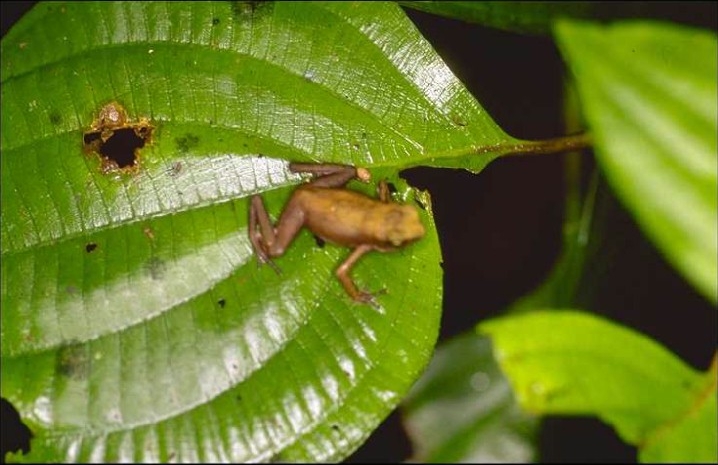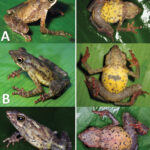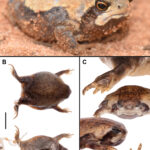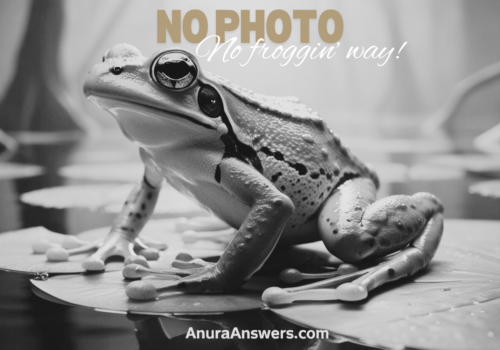Atelopus Franciscus: The Endangered Jewel of Ecuador’s Cloud Forests#
In the mist-shrouded tranquility of Ecuador’s cloud forests, where emerald foliage glistens under morning dew and the whispers of waterfalls echo through the canyons, resides a strikingly beautiful and increasingly rare amphibian. Known to science as Atelopus franciscus, commonly referred to as the Rio Paute stubfoot toad, this tiny amphibious gem represents both the awe-inspiring biodiversity of the Andean region and an urgent conservation story. Living amidst cascades of water and moss-drenched stones, their vivid coloration and delicate anatomy delight naturalists while their plight deeply concerns conservationists worldwide.
First documented in the late 20th century, Atelopus franciscus quickly became recognized not only for its distinctive appearance but also as an alarming illustration of amphibian vulnerability. With populations dwindling, each glimpse of this elusive species is now a treasured event for biologists and nature enthusiasts alike. Understanding the uniqueness of its ecology, biology, and the threats it faces is crucial in creating successful conservation strategies for this treasure of the Andes.
Taxonomy and Classification#
Atelopus franciscus belongs to the family Bufonidae, a large and diverse family commonly known as true toads. Within this family resides the genus Atelopus, known collectively as harlequin toads or stubfoot toads due to their bright aposematic colorations combined with stubbed feet adaptations. The genus Atelopus is celebrated by herpetologists for its incredible diversity, vivid patterns, and its unfortunate status as one of the most threatened amphibian genera globally.
Taxonomically, Atelopus franciscus closely shares genetic and morphological features with species like Atelopus ignescens and Atelopus bomolochos, yet it retains distinguishing characteristics setting it apart. Scientists continue to refine their understanding of the species’ place within its genus using modern genetic sequencing and morphological analyses, underscoring its importance not only as a unique species, but also as a critical element for scientific insight into biodiversity, speciation, and evolutionary responses to environmental change.
Natural Habitat#
The Majestic Cloud Forests of Ecuador#
Atelopus franciscus is endemic to the montane cloud forests of the Paute River basin in the southern highlands of Ecuador. Inhabiting elevations typically ranging from 2,000 to 3,000 meters above sea level, this amphibian has adapted exquisitely to environments characterized by consistently cool temperatures, near-constant humidity, and lush vegetation composed of epiphytes, moss-covered trees, and cascading water sources.
Their habitat is one of gentle ubiquity, a realm enveloped in permanent mist. Here, streams trickle through carpets of lichens and ferns, creating pockets of microhabitats crucial for survival. Shallow running waters, rocky crevices covered by wet leaves, and decaying logs serve as protective refuges, feeding grounds, breeding spots, and nurseries for their delicate tadpoles. Such specialized habitats underline why even slight changes in temperature, precipitation, or human-impacted disturbances have dramatic impacts on their survival prospects.
Physical Characteristics#
At first glance, the Rio Paute stubfoot toad appears like a miniature work of art, painted by nature herself. Individual adults measure approximately 2 to 3 centimeters in length, with females typically slightly larger than males. Its lithe body, fine elongated limbs, and notably reduced feet (hence the common name “stubfoot”) grant it remarkable agility for navigating wet and slippery terrain.
Yet, beyond its anatomy and small stature, the striking coloration defines this toad’s uniqueness. Its dorsal surface boasts dramatic shades ranging from brilliant yellows, vibrant oranges, to deep chocolatey blacks. These color combinations provide crucial aposematic functions, vividly warning would-be predators of the toad’s toxicity. Evolution has masterfully sculpted the color patterns into remarkable energy-saving defense tactics, reducing predator encounters and preserving precious resources for reproduction and survival.
Behavior and Life Cycle#
Diet and Hunting Strategies#
As insectivorous creatures, Atelopus franciscus primarily feeds on ants, beetles, flies, and larvae, capturing prey with quick, precise motions of their long, sticky tongues. By patrolling through wet foliage during twilight hours when humidity peaks and prey are most abundant, they have developed efficient foraging methods. While feeding behaviors can seem deceptively simple, the subtle intricacies—such as choosing specific feeding grounds and carefully managing energy expenditure—illustrate the sophisticated adaptations they’ve evolved to thrive in their challenging environment.
Breeding and Tadpole Development#
The annual reproductive rituals of Atelopus franciscus are closely synchronized with the region’s rainy season, a period when stream and brook expansions provide abundant aquatic habitats ideal for egg laying. Male frogs, during these moist periods, congregate near pristine running waters, using melodious calls punctuated in rhythmic intervals to attract partners. Once paired through their amplexus posture, a continuity of delicate rituals ensures the successful laying and fertilization of gelatinous clusters of eggs attached firmly onto submerged stones or stream banks.
After hatching into translucent tadpoles, these developing lifeforms feed mainly upon algae and microorganisms thriving upon submerged textures of stones and aquatic vegetation. Over the following months, their bodies undergo incredible metamorphoses—from gill-breathing larvae to terrestrial froglets capable of exploring the dense understory—a remarkable transformation symbolizing continued resilience and renewal in these pristine ecosystems.
Ecological Role#
Far from being isolated actors, Atelopus franciscus frogs form integral layers of biological interdependencies in their montane ecosystems. By consuming insects, they maintain ecological balance, ensuring insect populations remain stable. Simultaneously, their toxicity serves as a trophic signal, guiding predators to correctly identify the frog’s unpalatable nature, fostering nuanced predator-prey relationships essential to balanced biodiversity.
Equally critical is the role of amphibians as bio-indicators. Being intrinsically sensitive to habitat change, pollution, and climate variations, the presence, condition, and population fluctuations of these frogs accurately reflect the greater ecological health of their habitats—making them indispensable allies in conservation monitoring and stewardship.
Threats and Conservation Status#
Sadly, despite their ecological significance and aesthetic beauty, Atelopus franciscus face an alarming array of threats. Foremost are habitat destruction and fragmentation resulting from agricultural expansion, logging, road construction, and increased human settlement pressures. Moreover, amphibian chytridiomycosis, a fungal disease devastating amphibian populations worldwide, poses severe threats—leading to drastic population declines in recent decades.
Recognizing the severity of the situation, the International Union for Conservation of Nature (IUCN) classifies Atelopus franciscus as Critically Endangered. Urgent and structured conservation actions—including rigorous monitoring, habitat restoration, anti-chytrid treatments, captive breeding initiatives, and bolstered legal protections—are critical for averting imminent extinction scenarios.
Cultural and Scientific Significance#
Although culturally elusive, the striking harlequin-like patterns of the Rio Paute stubfoot toad have long captured the imagination of local communities and field naturalists. Scientifically, this species has triggered intensified investigative impulses, leading to breakthroughs around amphibian immunological resilience, ecological adaptation, and disease management research.
Beyond merely scientific intrigue, these frogs symbolize the fragile interconnectedness of our environment, highlighting humanity’s responsibility toward safeguarding Earth’s delicate biodiversity tapestry. As ambassadors of sensitive habitats, their struggles reflect our broader environmental narrative, urging proactive collective engagement and conservation stewardship.
Conclusion: A Call to Conservation#
The fate of Atelopus franciscus poignantly reflects the contemporary challenges faced by myriad species inhabiting sensitive ecosystems. Protecting it requires deep understanding, sustained advocacy, and global cooperation. As nature enthusiasts and concerned citizens, each of us contributes by supporting habitat protection efforts, raising awareness, and advocating for conservation policies. It’s within our collective power—and indeed is our shared responsibility—to ensure future generations continue marveling at the splendid wonder represented by creatures like the Rio Paute stubfoot toad.














